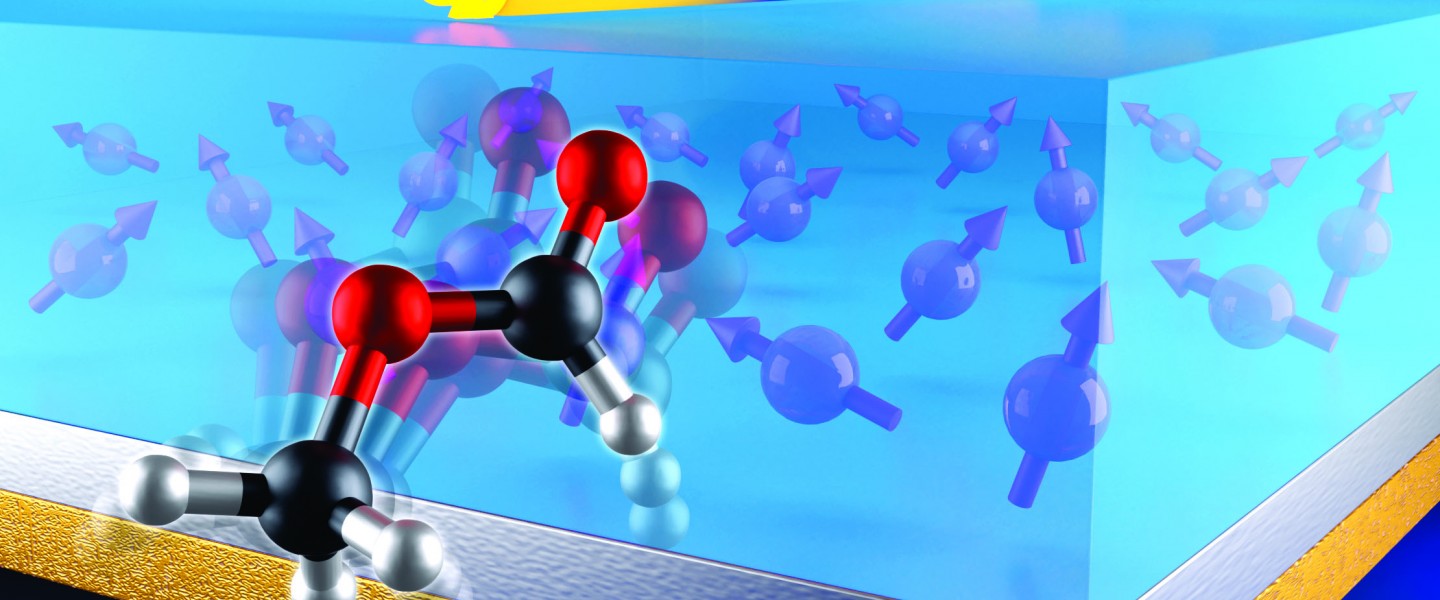Spontelectric solids
Spontelectric solids are a new form of molecular solid featuring thin films that spontaneously harbor electric fields of 107-108 Vm-1. Fields arise via spontaneous dipole orientation upon gas phase deposition of polar molecules on a sufficiently cold surface. The implications of this phenomenon range from better understanding VUV spectra for condensed molecular solids to improved modeling of star formation. The spontelectric effect, and the layering of spontelectric films to produce heterostructures has potential applications in molecular optoelectronics (e.g., quantum well formation, solid-state q-bits and nano-ion traps).
Layering these molecular solids to produce complex heterostructures introduces interfaces between different materials.
It is very difficult to probe these interfaces at the atomic scale in molecular solids, therefore many questions about interlayer mixing and diffusion remain unanswered. For example, in the interstellar medium, complex molecular ices form on refractive materials and these ice layers are estimated to be the origin of interstellar molecular complexity. Such ice layers are often stratified, reflecting their growth mechanism, and the processes that enable the release of solid material back into the gas phase are little understood. A molecular jet can be emitted from the surface of a comet covered in complex molecular ices in response to irradiation (heating) by the sun. The processes that lead to mixing, sublimation and desorption in stratified ice layers are poorly understood. So we cannot explain why these molecular jets occur, even though this is a key process for releasing complex species back into the gas phase of the interstellar medium, especially in the circumstellar disk around protostars.
The diffusion experiment is only possible using neutrons, and experiments requiring dedicated experimental setups have been developed. On the MagRef instrument at the Spallation Neutron Source we built a specific setup to enable in situ neutron reflectometry experiments to study molecular diffusion in hetero-layered polarized molecular ices. In short, we use neutron scattering measurements from molecular films grown in situ, under clean high-vacuum conditions at cryo-temperatures, to measure interlayer molecular diffusion across angstrom length scales.
In this study, we used the spontelectric effect as a new and very sensitive means of studying relaxation phenomena in glasses far below the glass transition temperature. We employed magnetic phasing, using a ferromagnetic reference substrate layer and a polarized neutron beam, to improve contrast.
Submitted by: Dr. Valeria Lauter
- Read the ChemComm Communication Article
- View the Science Highight



